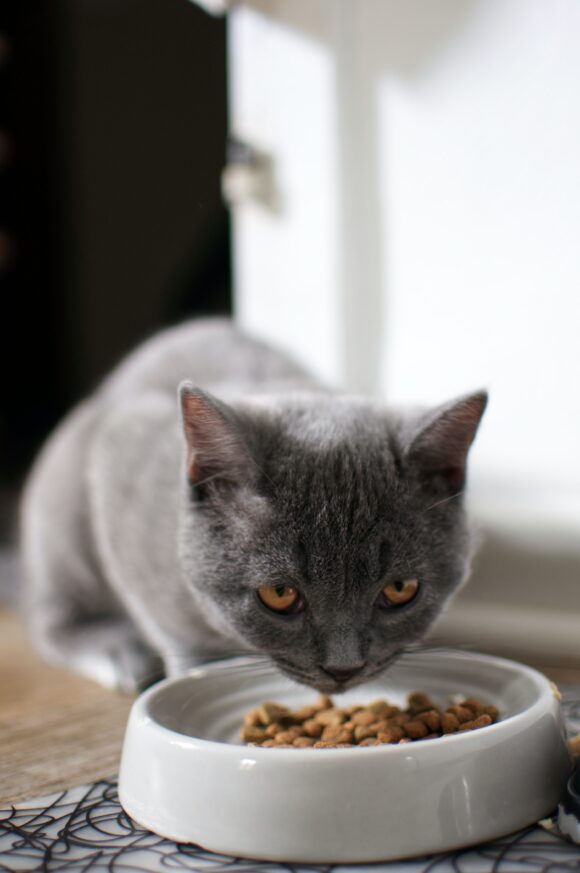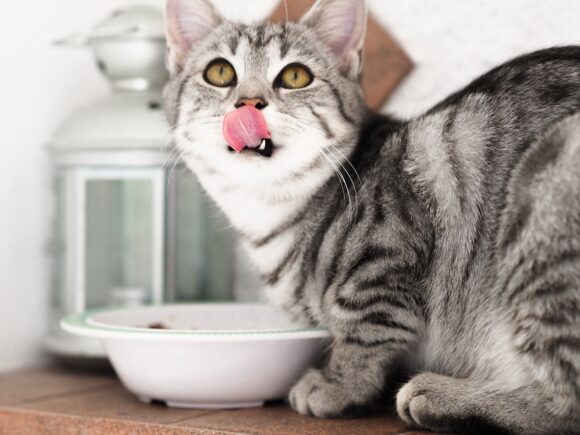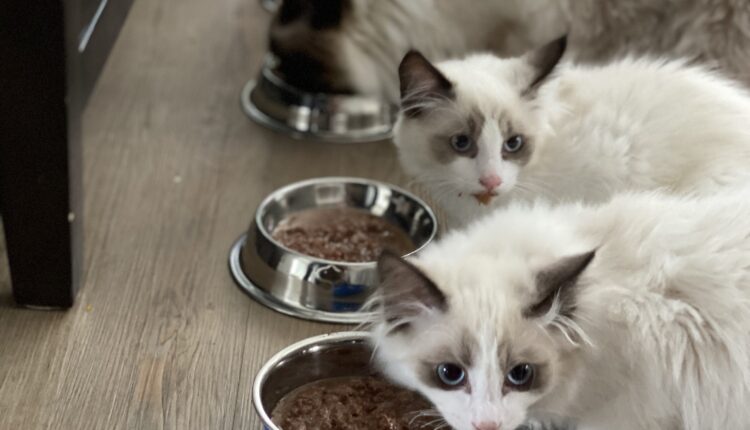The Ultimate Guide to Choosing the Right Cat Food
Are you feeling overwhelmed with the vast selection of cat food options available? Look no further! “The Ultimate Guide to Choosing the Right Cat Food” is here to help simplify your decision-making process. With expert advice and practical tips, this comprehensive guide provides you with all the information you need to ensure that your furry friend receives the nutrition they deserve. From understanding different cat food ingredients to considering your cat’s specific dietary requirements, this guide has got you covered. Say goodbye to confusion and hello to confidently selecting the perfect cat food for your beloved feline companion.

1. Understanding Your Cat’s Nutritional Needs
1.1. The Importance of a Balanced Diet
When it comes to your cat’s health and well-being, a balanced diet is essential. Just like humans, cats require a proper balance of nutrients to thrive. A balanced diet ensures that your cat gets all the necessary vitamins, minerals, proteins, fats, and carbohydrates to support their overall health. It can help prevent malnutrition, obesity, and other health issues that can arise from a poor diet.
1.2. Recognizing Specific Dietary Requirements
Every cat is unique, and their dietary requirements may vary depending on factors such as age, breed, size, activity level, and any underlying health conditions. For example, kittens have different nutritional needs than adult cats, and senior cats may require special diets to address age-related concerns. It’s important to understand and recognize these specific dietary requirements to provide your cat with the best possible nutrition.
1.3. Differentiating between Life Stages and Lifestyles
Understanding the different life stages and lifestyles of cats can help you determine their nutritional needs. Kittens, adult cats, and senior cats have varying energy levels and requirements. Active and outdoor cats may need a higher calorie intake, while indoor cats may have different dietary needs. By considering your cat’s life stage and lifestyle, you can make informed decisions about their diet and ensure they receive the nutrients they need.
2. Decoding Cat Food Labels
2.1. Understanding the Ingredient List
Decoding cat food labels is essential to make informed decisions about what you’re feeding your cat. The ingredient list provides valuable information about the quality and composition of the food. Look for high-quality protein sources, such as chicken or fish, listed as the first ingredients. Avoid foods that contain fillers, by-products, or excessive amounts of carbohydrates. Familiarize yourself with common ingredients and their nutritional benefits to ensure your cat gets the best possible nutrients.
2.2. Analyzing Guaranteed Analysis
The guaranteed analysis section of cat food labels provides information about the minimum and maximum amounts of crude protein, crude fat, crude fiber, and moisture content. This analysis gives you an idea of the nutritional composition of the food. Ensure that the percentages align with your cat’s specific dietary needs. Keep in mind that these values are specified on an “as fed” or “dry matter” basis, depending on the type of food, so it’s essential to consider this when comparing different brands or types of cat food.
2.3. Recognizing Feeding Recommendations
Feeding recommendations on cat food labels provide general guidelines on how much food to give your cat based on their weight and life stage. While these recommendations are a good starting point, it’s important to remember that each cat is unique. Factors such as metabolism, activity level, and appetite can influence the amount of food your cat needs. Monitor your cat’s weight and adjust their portions accordingly to prevent overfeeding or underfeeding.

3. Identifying Essential Nutrients for Cats
3.1. Protein Requirements
Protein is an essential nutrient for cats as they are obligate carnivores, meaning their bodies have evolved to require a diet high in animal-based protein. Look for cat foods that have high-quality animal protein sources at the top of the ingredient list, such as chicken, turkey, or fish. Adequate protein intake helps maintain strong muscles, supports immune function, and promotes healthy growth and development.
3.2. The Importance of Fats
Fats are another crucial component of a cat’s diet. They provide a concentrated source of energy and are necessary for the absorption of fat-soluble vitamins. Look for cat foods that contain sources of healthy fats, such as chicken fat or fish oil. Omega-3 fatty acids, in particular, are beneficial for a cat’s skin and coat health, as well as their brain and eye development.
3.3. Understanding Carbohydrates and Fiber
While cats are primarily carnivorous, small amounts of carbohydrates can still be included in their diet. Carbohydrates and fiber can help provide energy and aid in digestion. However, excessive amounts of carbohydrates can lead to weight gain and other health issues. Look for cat foods that contain easily digestible carbohydrates such as sweet potatoes or rice.
3.4. Essential Vitamins and Minerals
Vitamins and minerals play a crucial role in maintaining a cat’s overall health and well-being. They support various bodily functions, including immune function, bone health, and proper development. Look for cat foods that are fortified with essential vitamins and minerals, such as vitamin A, vitamin D, calcium, and phosphorus. These nutrients are especially important for growing kittens and senior cats to support their unique needs.
4. Evaluating Different Types of Cat Food
4.1. Dry Cat Food (Kibble)
Dry cat food, also known as kibble, is a popular choice for many cat owners due to its convenience and affordability. It has a long shelf life and can be left out for free feeding. However, some cats may not drink enough water when consuming dry food, increasing the risk of dehydration, urinary tract issues, or kidney problems. It’s important to ensure that your cat has access to fresh water when feeding them dry cat food.
4.2. Wet Cat Food (Canned)
Wet cat food, also known as canned food, is a moisture-rich option that can help keep your cat hydrated. It typically contains higher levels of animal protein and lower levels of carbohydrates compared to dry cat food. The texture and aroma of wet food can be more appealing to cats, especially those who are picky eaters or have dental issues. However, it can be more expensive than dry food and needs to be refrigerated after opening.
4.3. Semi-Moist Cat Food
Semi-moist cat food is a middle ground between dry and wet food. It has a soft and chewy texture, making it appealing to many cats. However, it may contain higher levels of artificial preservatives and flavorings, so it’s essential to read the ingredient list carefully. Semi-moist food is often sold in individual portion packs, providing convenience for portion control.
4.4. Raw and Homemade Cat Food
Raw and homemade cat food diets have gained popularity in recent years. These diets typically consist of uncooked meat, bones, and other ingredients. While it can provide a more natural and unprocessed option, it is essential to consult with a veterinarian or cat nutritionist to ensure that the diet is nutritionally balanced and meets your cat’s specific needs. Raw diets can also pose a risk of bacterial contamination, so proper food handling practices are crucial.

5. Considering Special Diets
5.1. Grain-Free Cat Food
Grain-free cat food has become increasingly popular in recent years. Some cats may have grain allergies or sensitivities, leading to digestive issues or skin problems. Grain-free cat food typically replaces grains with alternative carbohydrate sources like potatoes or peas. However, it’s important to note that not all cats require a grain-free diet, and grains can provide beneficial nutrients.
5.2. Limited Ingredient Diets
Limited ingredient diets are designed for cats with food allergies or sensitivities. These diets contain a minimal number of ingredients to help identify and eliminate potential allergens. If your cat has shown signs of allergies, such as excessive itching, gastrointestinal issues, or ear infections, a limited ingredient diet may be worth considering. Consult with your veterinarian to determine the best approach for your cat’s specific needs.
5.3. Weight Management Formulas
Weight management formulas are specially formulated to help cats achieve or maintain a healthy weight. These diets typically have reduced calorie content and higher levels of fiber to promote satiety and prevent overeating. If your cat is overweight or prone to weight gain, a weight management formula may be beneficial. It’s important to monitor their weight and consult with your veterinarian for guidance on portion sizes and feeding schedules.
5.4. Cat Food for Sensitive Stomachs
Some cats may have sensitive stomachs, leading to digestive issues such as vomiting, diarrhea, or excessive gas. Cat food formulated for sensitive stomachs can help alleviate these symptoms by using easily digestible ingredients and avoiding common allergens or irritants. If your cat has ongoing digestive problems, it’s important to consult with your veterinarian to rule out any underlying health issues.
6. Catering to Health Conditions and Allergies
6.1. Cat Food for Hairball Control
Hairballs are a common issue for cats, especially those with long hair. Cat food specifically formulated for hairball control can help reduce the frequency and severity of hairballs. These diets typically contain higher levels of fiber to aid in digestion and promote the passage of hair through the digestive system. Regular grooming and providing your cat with appropriate grooming tools can also help minimize hairball issues.
6.2. Urinary Tract Health Formulas
Urinary tract issues, such as urinary tract infections or feline lower urinary tract disease (FLUTD), can be painful and detrimental to a cat’s health. Cat food formulas designed for urinary tract health can help prevent the formation of urinary crystals or stones and support a healthy urinary system. These diets typically have controlled levels of minerals and promote urinary tract health through ingredients like cranberry extract or DL-methionine.
6.3. Joint Support and Arthritis Management
As cats age, they may develop joint issues or arthritis. Cat food formulas that support joint health can provide essential nutrients like glucosamine and chondroitin to promote joint flexibility and reduce inflammation. These diets can help manage discomfort and improve mobility for cats with joint issues. If you notice your cat having difficulty jumping, getting up or down stairs, or showing signs of joint pain, consult with your veterinarian for appropriate dietary recommendations.
6.4. Food Allergies and Dietary Restrictions
Just like humans, cats can develop food allergies or sensitivities. Common allergens for cats include ingredients like chicken, beef, dairy, or grains. If your cat shows signs of food allergies, such as skin rashes, chronic ear infections, or gastrointestinal issues, it’s crucial to identify the allergen and eliminate it from their diet. Your veterinarian may recommend an elimination diet or a hypoallergenic diet to determine and manage your cat’s dietary restrictions.
7. Considering Budget and Affordability
7.1. Evaluating the Cost of Cat Food
When choosing cat food, it’s important to consider your budget and the cost of the food. High-quality cat foods may come with a higher price tag, but they often provide better nutrition and fewer fillers compared to cheaper options. However, affordable doesn’t always mean low quality. Some budget-friendly cat food brands offer adequate nutrition without breaking the bank. It’s essential to strike a balance between cost and quality when selecting cat food for your feline companion.
7.2. Finding the Right Balance
Finding the right balance between cost and quality is crucial when choosing cat food. Consider factors such as your cat’s specific dietary needs, ingredient quality, and your budget. Look for cat foods that meet your cat’s nutritional requirements while considering cost-effective options. Remember that investing in good quality cat food can contribute to your cat’s long-term health and potentially reduce veterinary expenses down the road.
8. Understanding Cat Food Regulations and Safety
8.1. The Role of AAFCO
The Association of American Feed Control Officials (AAFCO) sets standards and regulations for pet food manufacturers in the United States. AAFCO establishes guidelines for product labeling, nutritional adequacy, and ingredient definitions. Look for cat foods that meet AAFCO standards and have undergone feeding trials or have nutrient profiles that meet the specific needs of your cat’s life stage.
8.2. Avoiding Harmful Ingredients
When selecting cat food, it’s important to avoid harmful ingredients that may be detrimental to your cat’s health. Ingredients such as artificial preservatives, colors, or flavors, excessive amounts of fillers or carbohydrates, or controversial additives like carrageenan or artificial sweeteners should be avoided. Read the ingredient list carefully to ensure that you’re feeding your cat a high-quality and safe diet.
8.3. Ensuring Proper Storage and Handling
Proper storage and handling of cat food are essential to maintain its freshness and nutritional integrity. Follow the manufacturer’s guidelines for storage conditions, such as keeping the food in a cool, dry place, away from direct sunlight or humidity. Ensure that the food is stored in a sealed container to prevent contamination or exposure to pests. Additionally, always wash your hands before and after handling cat food to prevent the spread of bacteria.
9. Seeking Professional Advice
9.1. Consulting with a Veterinarian
When it comes to your cat’s dietary needs, consulting with a veterinarian is essential. They can assess your cat’s overall health, perform any necessary tests, and provide expert advice on choosing the right cat food. Veterinarians have extensive knowledge and experience in feline nutrition and can guide you in selecting a diet that meets your cat’s specific needs, taking into consideration any existing health conditions or concerns.
9.2. Seeking Advice from Cat Nutritionists
Cat nutritionists are professionals who specialize in feline nutrition. They can provide valuable insights into your cat’s specific dietary needs and help create a customized feeding plan tailored to your cat’s individual requirements. Consulting with a cat nutritionist can be especially beneficial if your cat has unique dietary requirements or health conditions that require specialized attention.
10. Considering Cat Food Reviews and Recommendations
10.1. Relying on Customer Reviews
Customer reviews can provide helpful insights when choosing cat food. While they can be subjective, reading reviews can give you an idea of other cat owners’ experiences with different brands or types of cat food. Look for trends or repeated comments regarding the quality, palatability, and effectiveness of the food. Keep in mind that not all cats have the same preferences, so what works for one may not work for another.
10.2. Trusted Sources of Cat Food Recommendations
In addition to customer reviews, there are trusted sources of cat food recommendations that you can rely on. Veterinary websites, reputable pet food review websites, or recommendations from your veterinarian are some reliable sources of information. These sources often provide comprehensive and unbiased reviews, taking into account factors such as ingredient quality, nutritional value, and safety. It’s essential to consider multiple sources and opinions to make an informed decision about your cat’s diet.
In conclusion, choosing the right cat food is vital for your feline friend’s overall health and well-being. Understanding your cat’s nutritional needs, decoding cat food labels, identifying essential nutrients, evaluating different types of cat food, considering special diets, and seeking professional advice can all contribute to making informed decisions. By prioritizing your cat’s dietary requirements and making educated choices, you can ensure that they receive the best nutrition possible to lead a healthy and happy life.


